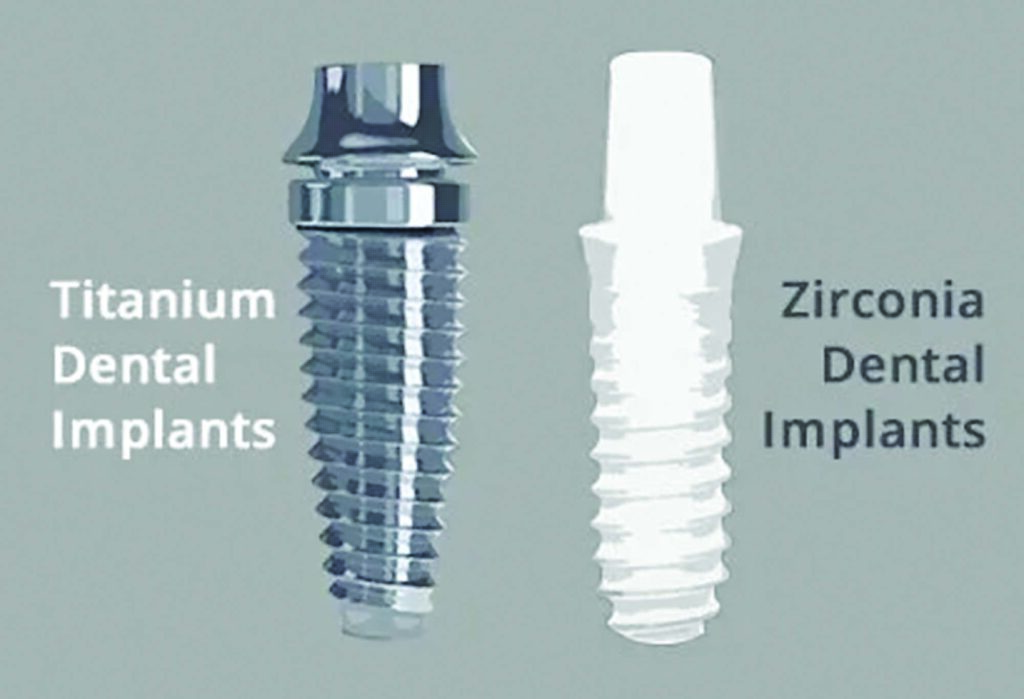Dental implants have become the gold standard for replacing missing teeth, offering both function and natural aesthetics. With advances in materials and technology, patients now face more choices—especially when it comes to deciding between titanium and zirconia implants. These two materials differ in structure, performance, and biocompatibility, making it important to understand the pros and cons of each before moving forward with treatment.
While dental implants may seem like a modern innovation, the concept isn’t new. Ancient civilizations used materials like carved bamboo or metal to replace lost teeth. The foundation for today’s implant technology was laid in the 1950s when Swedish researcher Dr. Per-Ingvar Brånemark discovered that titanium could bond with bone through a process called osseointegration. This discovery revolutionized dentistry and made titanium the go-to implant material for decades.
Titanium Implants: A Time-Tested Option
Titanium remains the most commonly used implant material thanks to its strength, reliability, and long history of success. It integrates predictably with bone, which supports long-term stability. Titanium implants are also known for their durability, performing well under the daily pressure of chewing and biting.
Another benefit is their restorative flexibility—titanium can be used with a variety of prosthetic options, including screw-retained crowns and bridges, which allow for easier adjustments or repairs.
However, titanium isn’t without drawbacks. In patients with thin gum tissue, the metal may show through, causing soft tissue discoloration. Though rare, some individuals may also have metal sensitivities or allergic reactions. Titanium is conductive and can corrode slightly in acidic environments, which may contribute to increased inflammation, bone loss and bacterial buildup around the implant.
Zirconia Implants: A Metal-Free Alternative
Zirconia ceramic implants offer a newer, metal-free solution for those seeking an even healthier and hypoallergenic option. Naturally white and tooth-colored, zirconia implants are ideal for front-tooth restorations where aesthetics are especially important.
Zirconia is known for being bioinert and biocompatable—it integrates well with both bone and gum tissue and is resistant to plaque buildup and inflammation. As a non-metal, it doesn’t conduct heat or electricity and exhibits no corrosion, making it appealing for patients who want a clean metal-free option. Because fibroblasts like zirconia, the gum tissue actually adheres to zirconia creating a seal that resists peri-implantitis. So as a zirconia implant heals, it almost never experiences inflammation.
The drawback to zirconia is that it takes longer to heal, probably because it is non-inflammatory and thus relies more on the natural course of bone healing, which takes 4-6 months. It is also more technique sensitive, has more limited restorative and prosthetic flexibility, and is more expensive.
What the Research Shows
Both materials have high short-term success rates for single-tooth implants. However, titanium has been proven to have long-term mechanical reliability and versatility, particularly in full-arch or complex cases. Still, for patients with sensitivities or who prioritize non-metal solutions, zirconia offers a compelling alternative—especially when placed by a provider experienced with its unique requirements.
Making the Right Choice
Ultimately, the choice between titanium and zirconia implants depends on a patient’s health, goals, and preferences. Both materials offer excellent outcomes when used appropriately, and understanding the key differences can help patients make confident, informed decisions about their oral health.
Dr. Kevin Schwandt practices dentistry at Reclaim Integrative Dentistry & Implant Center in Wheat Ridge.






